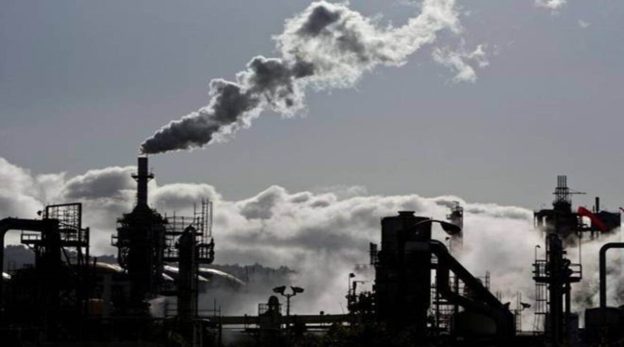An “atlas of human suffering” is how UN secretary general António Guterres described the second instalment of the Intergovernmental Panel on Climate Change’s (IPCC’s) sixth assessment report which was released on Monday.
The IPCC has talked about projected regional climate-change impact, including that on major cities, in some detail in the report. Even though the relevant science says a 45% cut in emissions by 2030 is non-negotiable to stay on track of limiting global temperature rise by the end of century to 1.5oC, the fact is global emissions will increase by 14% over the current decade at the current reduction commitments. The window to act, as IPCC has repeatedly pointed out in the recent past, is closing fast—for some projected scenarios, it has already closed.
The latest IPCC report paints the bleakest picture among all its assessments so far. Extreme weather events will be more severe and frequent than hitherto predicted. There will be mass die-offs of plant and animal species, on the ground and in the seas and key carbon sinks will turn carbon sources, etc. Nearly half the current world population lives in areas which are the most vulnerable to a climate crisis, and the number of people exposed to intense heatwaves is set to jump from one in three to 50-75% of the population by the end of the century. No area will be spared, but India is, in a manner of speaking, in for real pain. Coastal cities will bear the brunt of rising sea-levels. Mumbai is at risk of terrible flood losses, with damages reaching an estimated $49-50 billion per year by 2050—and $142-145 billion by 2070. Rising emissions will make much of north India unsurvivable, where the wet-bulb (heat and humidity measure) temperature could reach 35oC (can’t be borne beyond six hours). Given how the region is a major grain belt for the country, there will be obvious implications for food security.
The biggest threat is to India’s future urbanisation. Guterres called the report a damning indictment of “failed global leadership on climate”. Even with all the action promised by the West and the developing world, it is clear that not enough is being done. While concerted global action is the only answer, it is hard to see it happen in time for the Earth to avoid catastrophic heating. So, even as India works towards the only, and therefore, the ideal, solution, it needs to concentrate on adaptation, specifically urban adaptation—cities will be home to nearly 900 million Indians by 2050, up from close to 500 million now. Given the dire projections for a Mumbai, or Chennai, or Kolkata, the need is of an adaptation strategy that is preemptive.
It is not as if India has done little on this front. It is a leader in the South Asia region on the sheer number of urban adaptation plans, from the local government level to that of the Centre. But, apart from the fact that the biggest cities have the most robust plans and a general adequacy of resources, it is also true that the gap between what is planned (let alone what will be realised on ground) and what is needed is still too large. Over the last 27 years, Mumbai has nearly doubled its built-up area. Very little of this, of course, was built with climate adaptation factored in. The Kerala and the Uttarakhand floods have well exposed the disregard to ecological considerations endemic to urban planning in India. From flood-resilience to energy efficiency, Indian cities have to get climate smart if they are to avoid becoming urban heat islands. And fast.
https://www.financialexpress.com/opinion/window-to-act-on-climate-change-is-closing-fast/2448126/





